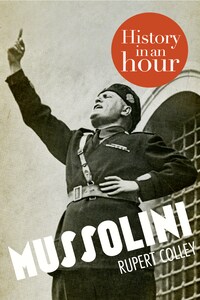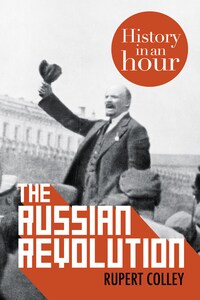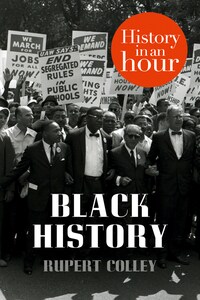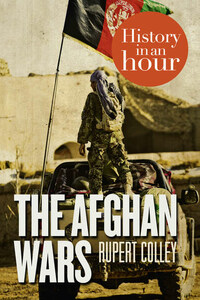CONTENTS
Cover
Title Page
Introduction
Risorgimento
Early Years
First World War
Mutilated Victory
The March on Rome
The Matteotti Crisis
Totalitarianism
Mussolini and the Pope
The Duce’s Cult of Personality
Mussolini’s Women
Anti-Semitism
Mussolini’s Foreign Adventures
Mussolini’s Wars
Austria, Czechoslovakia and Albania
War
Mussolini’s Downfall
The Rescue of Mussolini
The Italian Social Republic
Execution of Mussolini
The Italian Holocaust
Mussolini’s Body
Appendix 1: Key People
Appendix 2: Timeline
Copyright
Got Another Hour?
About the Publisher
‘Here lies one of the most intelligent animals who ever appeared on the face of the Earth.’ These, in 1937, were the words that Benito Mussolini wanted on his tombstone. Eight years later, his battered body was hung upside down for public display in the centre of Milan. There, until a few months before, thousands of people had congregated to hear him speak; now they congregated to throw abuse at his dangling corpse. He was then hastily buried in an unmarked grave in a Milanese cemetery. There was no funeral; no processions or tributes. For a man so sure of his place in the world and in history, he could not have foreseen a more undignified end.
Brash, arrogant and vain in the extreme, Benito Mussolini dreamt of making Italy a superpower, akin to the great Roman Empire of old with him at its helm. Il Duce, ‘the Leader’, as he liked to be known, ruled Italy from October 1922 until his downfall in July 1943, increasing his power from that of prime minister to fascist dictator. But as a boy, Mussolini was brought up with firm socialist ideals and, as a young man, became a leading figure in Italian socialist circles. His abrupt conversion to ardent nationalism during the First World War paved the way to power and the founding of the Italian fascist state.
Churchill described Mussolini as a ‘Roman genius’, Roosevelt called him ‘that admirable Italian gentleman’, while Gandhi admired his ‘sincerity’. But here was a man who had come to power on the back of violence and whose continued existence in office depended on oppression. He was a war leader without a strategy; an atheist who courted the Pope, a republican who accommodated the king, the builder of a totalitarian state based on compromises; a man who both despised and admired Hitler; a champion of the Jews and an anti-Semite; a loyal husband with a string of mistresses. A tyrant and a charmer, a charismatic leader and a meek follower, Mussolini’s life was one of contradiction – and one that led his nation to catastrophe and resulted in his own violent, sordid end.
This, in an hour, is the life of Benito Mussolini.
Italy, as a nation, had only been in existence since 1861 – when Victor Emmanuel II of Piedmont was declared king of the new Kingdom of Italy. Before unification, Risorgimento, Italy had existed as a number of independent states often under the rule of a foreign power. Only Rome resisted unification, despite it being designated capital, until, in 1870, it too had been incorporated, albeit forcibly, into the new nation state.
The high ideals and excitement of existing as one state evaporated as deeply ingrained political divisions, widespread poverty and deep-rooted corruption blighted the nation in its infancy.
Nature had already ensured that Italy suffered from a north–south divide. The climate and poor soil rendered the southern half of the country far harder to cultivate and for its population, of whom 90 per cent were still illiterate by the turn of the twentieth century, an existence of hardship and sometimes near starvation. Their situation was too often exacerbated by the equally divisive north–south political divide. Power was entirely rooted in the north, a system riddled with corruption, bribery and selfishness. From unification to the outbreak of the First World War in 1914, Italy had no less than twenty-three prime ministers, each governing with a series of ineffectual coalitions that failed to address the many pressing questions affecting the country as a whole. Rendered impotent, the king was unable to intervene, nor, following his death, was his son, Umberto I, who was assassinated in 1900.
For the mainly rural south, unification brought no benefits and only the scourges of higher taxation and conscription. The franchise, limited to the literate, property-owning classes, effectively excluded much of the southern population. Many southerners were attracted to the socialists or anarchists whose members sought to exploit their grievances for their own ends. Corruption was as rife in the south as it was in the north, giving rise to ruthless gangs, from which emerged the Sicilian-based Mafia.
Amidst this chaos was the Pope. Unification had stripped Pius IX of his vast territories stretching across central Italy, the Papal States, leaving him, by the Law of Guarantees of 1871, only the immediate area surrounding St Peter’s Church in Rome. Pius IX (at almost thirty-two years, the longest-serving Pope) and subsequent popes, refusing to recognize the Italian king or the Kingdom of Italy, declared themselves prisoners of the Vatican and refused to step outside its confines. Church and State were at loggerheads, a situation referred to as the ‘Roman Question’, and were to remain so until Mussolini’s deal with the Vatican in 1929.














